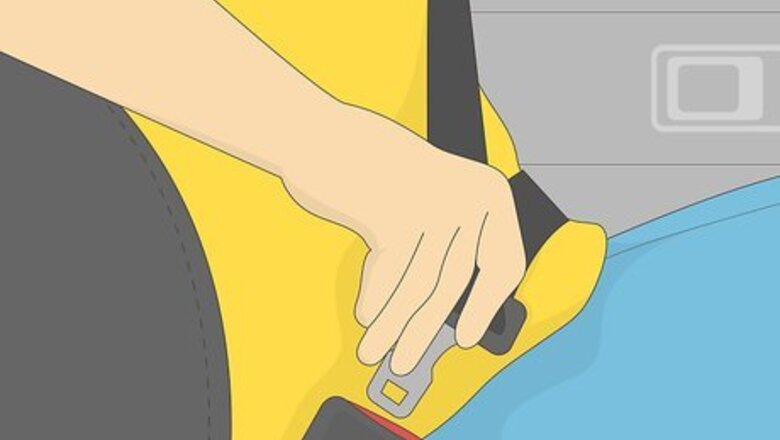
views
Wear your seatbelt.

Buckle up for safety. Seatbelts are an essential part of safe driving. Before you start driving, put on your seatbelt and make sure everyone else in the car is wearing theirs. If any children are riding in your car, check to make sure they’re buckled in properly as well. In 2017, the National Highway Traffic Safety Administration (NHTSA) reported that seatbelts saved nearly 15,000 lives.
Follow the speed limit.
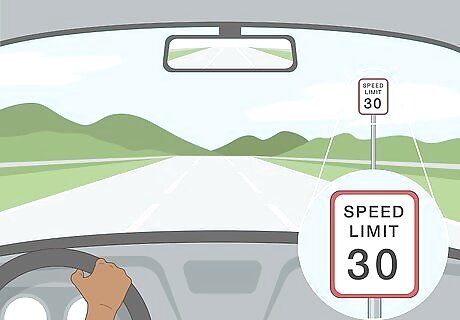
It’s not just the law—it’s for your safety. Higher speeds make it more difficult to control your vehicle and react if you need to avoid an accident. Speed limits are designed to help keep you safe on the road. Keep an eye out for the posted signs and make sure you follow the speed limit.
Stay alert and keep your eyes on the road.

All it takes is 3 seconds of distraction to cause an accident. Distracted or inattentive drivers are the leading causes of car accidents. Nearly 80% of crashes occur within 3 seconds of being distracted. Stay focused on the road at all times so you can react and avoid potential accidents. If you’re drowsy or tired, pull over to grab a cup of coffee or rest until you feel awake enough to drive.
Use the 3-4 second rule to keep a safe distance.

Keep a 3-4 second distance between you and the vehicle in front of you. The most likely place for you to get in an accident is right in front of you. Choose a fixed object like a traffic sign, wait for the vehicle in front of you to pass it, and then count how long it takes for you to pass it. Use this rule to help maintain enough distance so you can safely stop and avoid accidents. Increase your following distance an extra second conditions such as rain and fog, as well as when you’re driving at night or following a large truck.
Watch out for other drivers.

Don’t rely on other drivers to drive perfectly or be considerate. Be considerate of other drivers, but always be mindful of them. Don’t assume that they can see you or will move out of the way to allow you to turn or change lanes. If you assume that other drivers will make mistakes, you’ll be more prepared to act when they do.
Keep an eye out for motorcycles and bicycles.
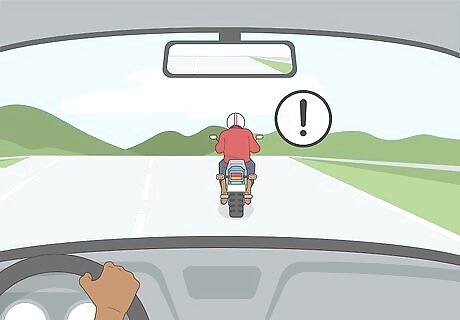
Pay extra attention to them when they’re near your car. Use your turn signals to alert them if you plan to make a turn or slow down. Add an extra second of following distance to motorcycles as well. That way, you have extra time to slow down if you have to suddenly stop.
Use your turn signals whenever you turn or change lanes.
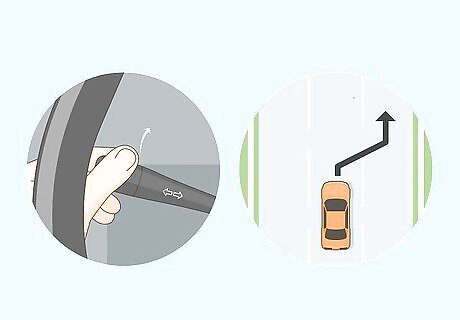
Give other drivers a heads up. Turn signals tell other vehicles around you that you plan to change lanes or make a turn. That gives them a chance to prepare to slow down or allow you to merge. Be courteous and safe by always using a turn signal before you merge or slow down to make a turn. In some places, failing to use your turn signal could get you a ticket.
Increase your speed to merge into a lane.
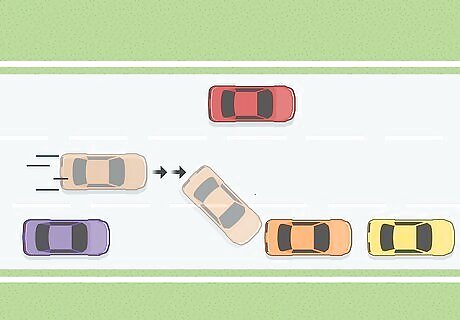
Identify a gap between cars and avoid slowing down. Put on your turn signal and increase your speed until you reach the gap. Use your mirrors and turn your head to make sure the opening is clear. Then, move your car into the lane and maintain your speed.
Use the left lane for passing.
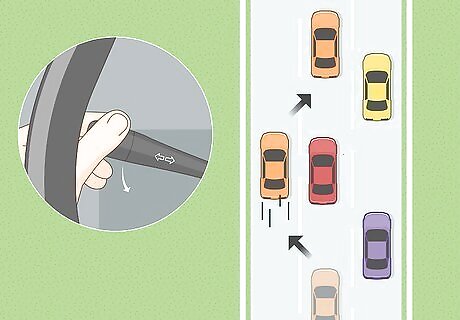
Change lanes and speed up to get around slower vehicles. Put on your turn signal, wait for an opening so the lane is clear, and move into the left lane. Speed up and pass the vehicle, put your turn signal on, wait for an opening, and then merge back into the right lane. Save the left lane for passing only.
Check your mirrors and blind spots.
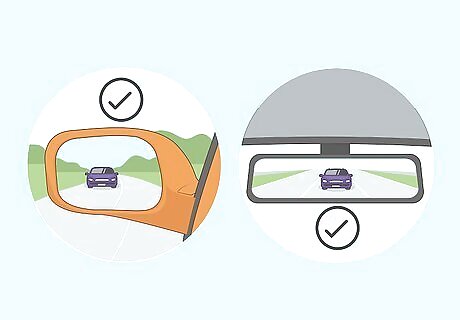
Keep a lookout for things you may miss. Every car has blind spots where their mirrors can’t see. Check behind you before you change lanes or back your car out so you don’t accidentally hit anything.
Pull over if you need to reach for something.
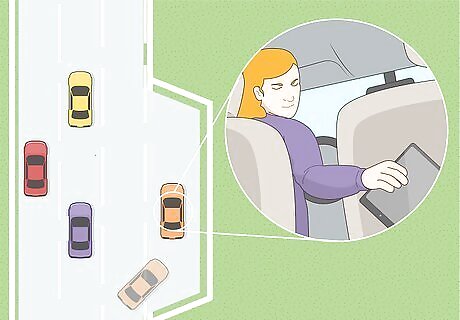
Don’t try to reach back behind you. Aside from using phones, reaching for objects is another leading cause of distracted driving. Instead of trying to reach for something, just pull over for a moment so you can grab it safely.
Put your phone away.

Remove the temptation to check it. Phones are the number one distraction out on the road. Even checking your phone for just a moment can take your eyes off the road long enough to cause an accident. Place your phone in your bag or center console while you’re driving so you don’t use it. You can also set it to “Do Not Disturb” so you don’t hear any alerts while you’re driving. Pull over or wait until you get to your destination to check your phone. It can wait!
Never drink and drive.
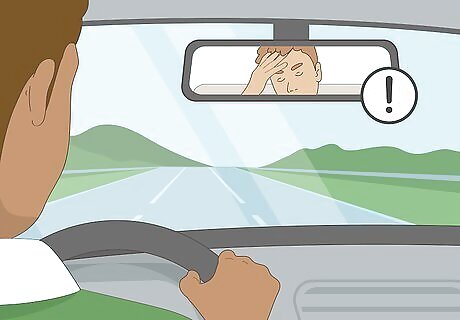
Have a designated driver or call a ride to get home safe. Drunk drivers can cause life-threatening accidents. If you’ve had anything to drink, play it safe and have somebody else drive. If you don’t have anybody else to drive, call a cab or use a ride-sharing app like Uber or Lyft. If you’re impaired or under the influence of any drugs, you may not be able to drive. Stay off the road and have somebody else drive if you can.
Keep your car well-maintained.
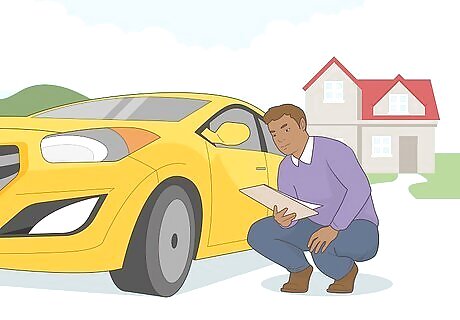
Preventative maintenance can keep your car operating safely. Check your tire pressure as well as the tread on your tires. Make sure your car’s fluids are filled and your battery is working. Check your owner’s manual and follow the maintenance schedule listed in it to keep your car performing safely and properly.











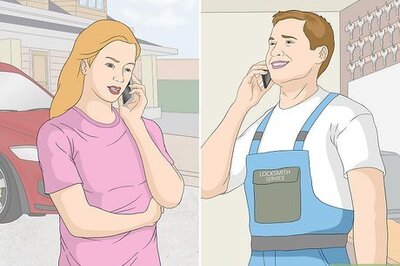





Comments
0 comment